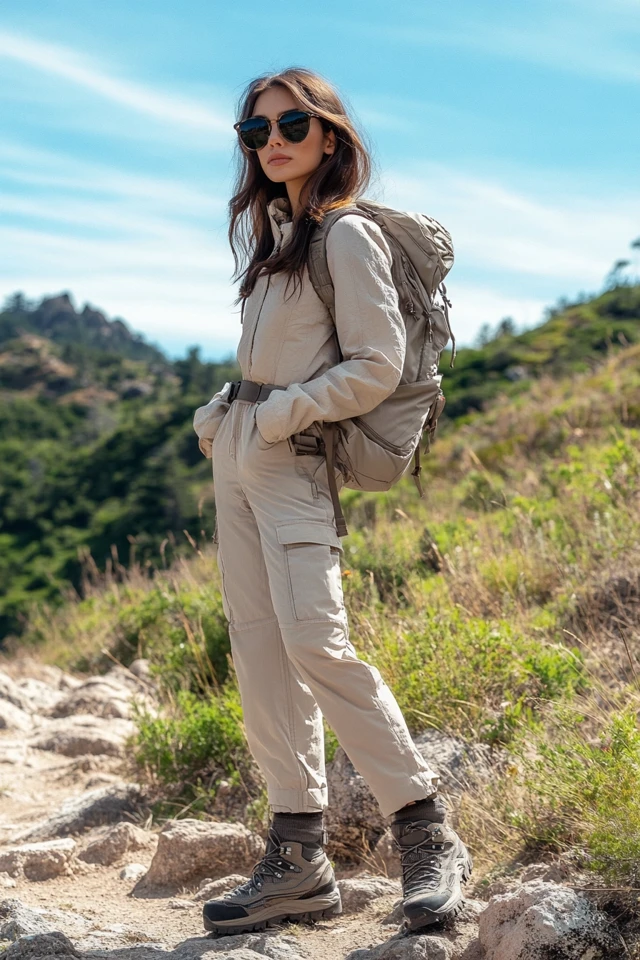Introduction
There’s nothing quite like lacing up a reliable pair of hiking boots and hitting the trail. Whether you’re trekking through misty mountain paths, exploring rugged desert terrain, or simply taking a walk in the woods, the right hiking boots can make all the difference. I’ll never forget one of my earliest hikes when I underestimated the importance of proper footwear. I wore lightweight sneakers on what I thought would be an easy trail, only to spend the entire descent slipping, sliding, and grimacing from sore feet. Lesson learned—adventure days require durable, supportive boots that can handle whatever nature throws at you.
Hiking boots aren’t just about comfort; they’re about safety and confidence. A well-made pair provides traction on uneven surfaces, supports your ankles on rocky trails, and keeps your feet dry in wet conditions. But beyond their practicality, today’s hiking boots are stylish enough to take you from the trail to post-hike coffee without missing a beat.
About the Author and My Trend Boutique
In this guide, we’ll explore why durable hiking boots are essential for outdoor adventures, what to look for when choosing the perfect pair, and how to style them for both function and flair. Whether you’re a seasoned hiker or just getting started, let’s gear up and hit the trail together.
Foundational Concepts: Why Hiking Boots Are Essential
Hiking boots are more than just shoes—they’re your most important piece of gear for outdoor adventures. Unlike casual sneakers or running shoes, hiking boots are designed specifically for the challenges of uneven terrain, unpredictable weather, and long hours on your feet.
Key Features of Durable Hiking Boots
- Traction: One of the most critical aspects of hiking boots is their outsoles. Most feature rugged, lugged designs made of durable rubber that provide grip on everything from muddy trails to rocky slopes.
- Support: Hiking boots are built with reinforced midsoles and padded ankle collars to stabilize your feet and reduce fatigue, especially on longer hikes.
- Waterproofing: Many hiking boots come with waterproof membranes like Gore-Tex to keep your feet dry in wet or snowy conditions while still allowing breathability.
- Durability: High-quality materials like leather, synthetic fabrics, and abrasion-resistant textiles ensure that hiking boots can withstand the wear and tear of rough environments.
When you’re wearing the right boots, you can focus on the experience instead of worrying about sore feet, blisters, or slipping on uneven ground. For me, my first hike in a proper pair of boots was a revelation. Suddenly, I felt confident on steep inclines and rocky trails—and I actually enjoyed the journey instead of just enduring it.
Picture Gallery
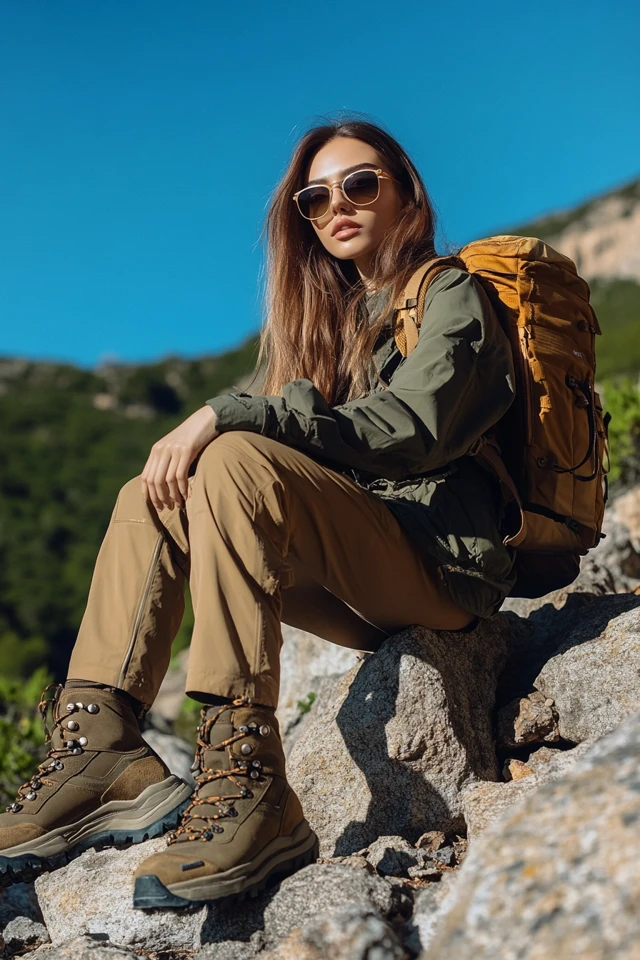
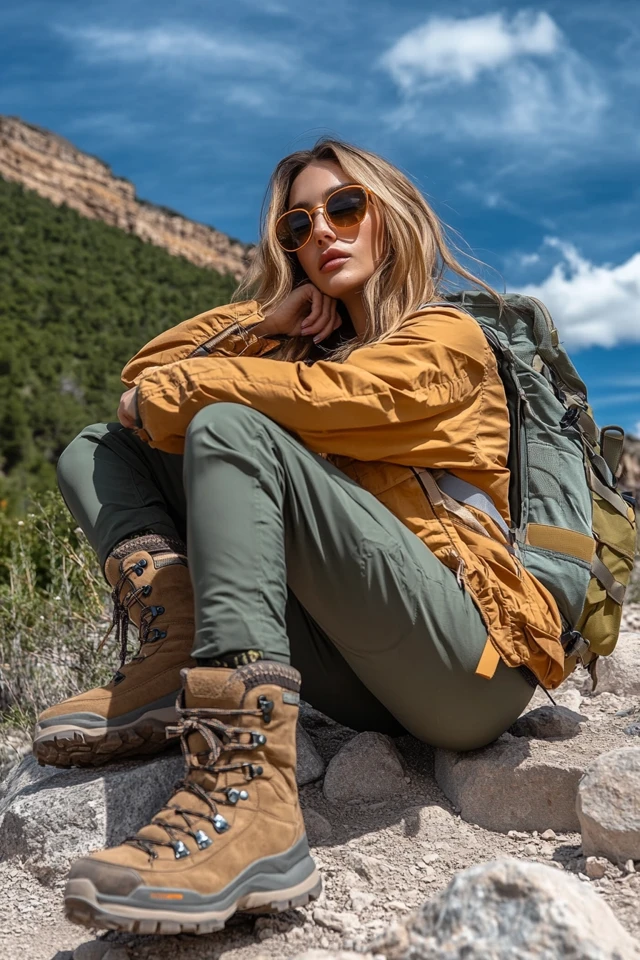
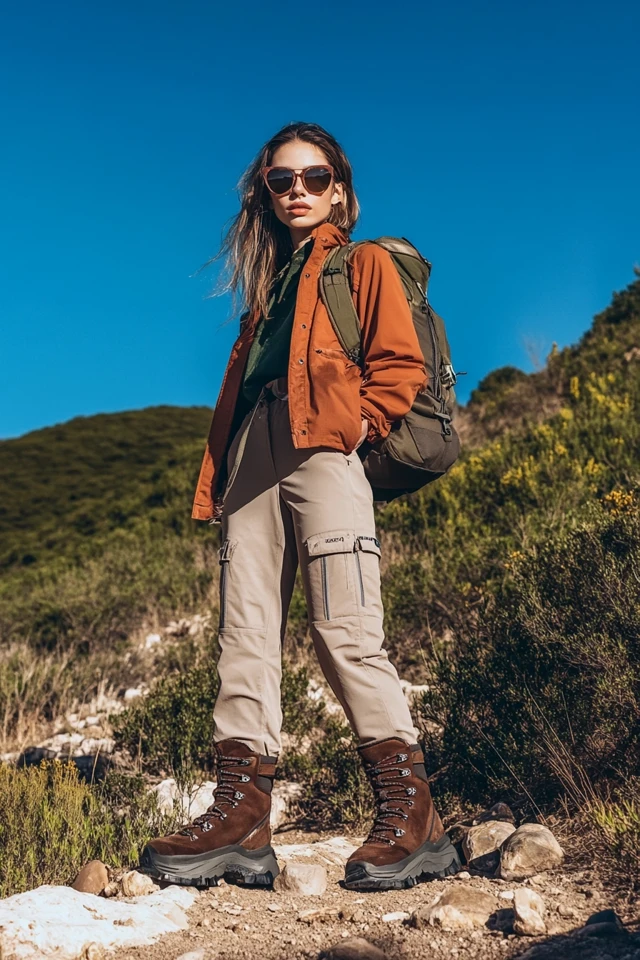
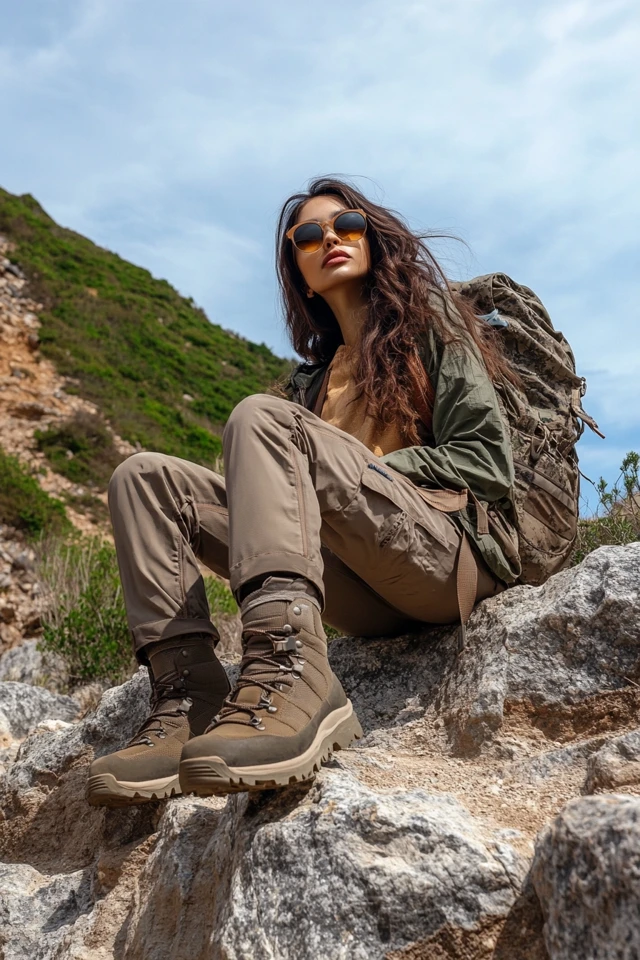
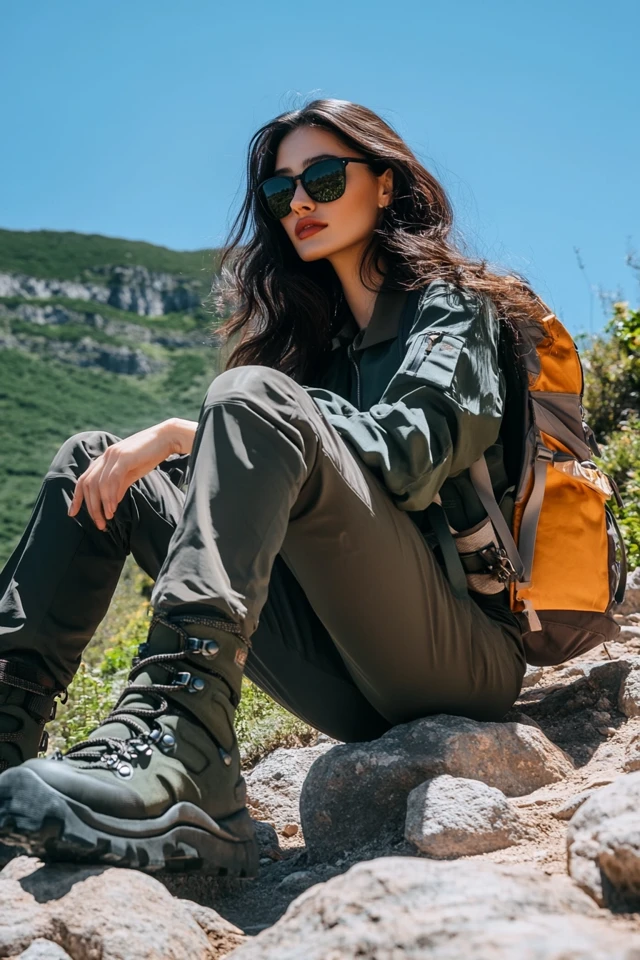
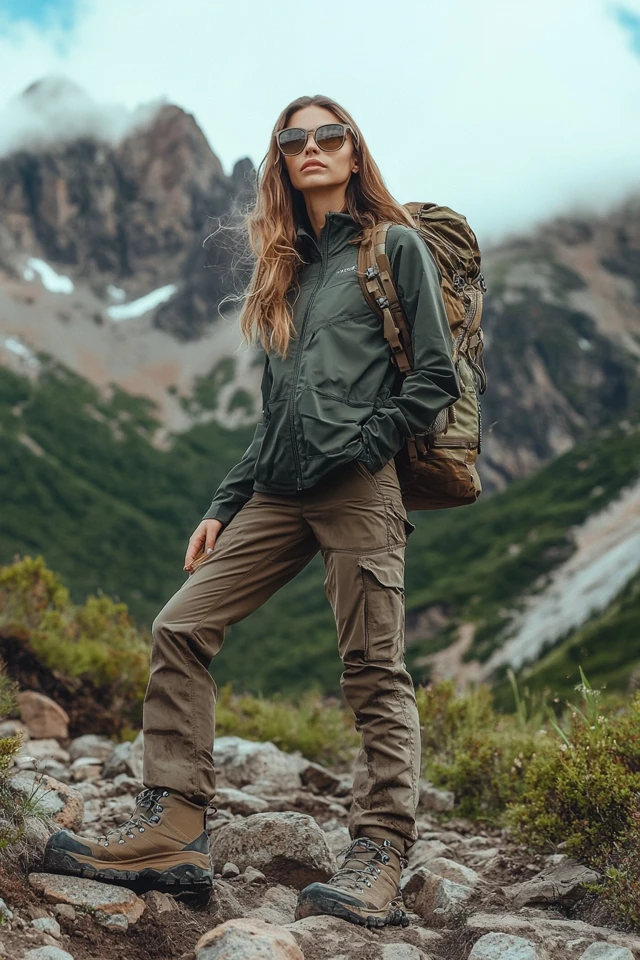
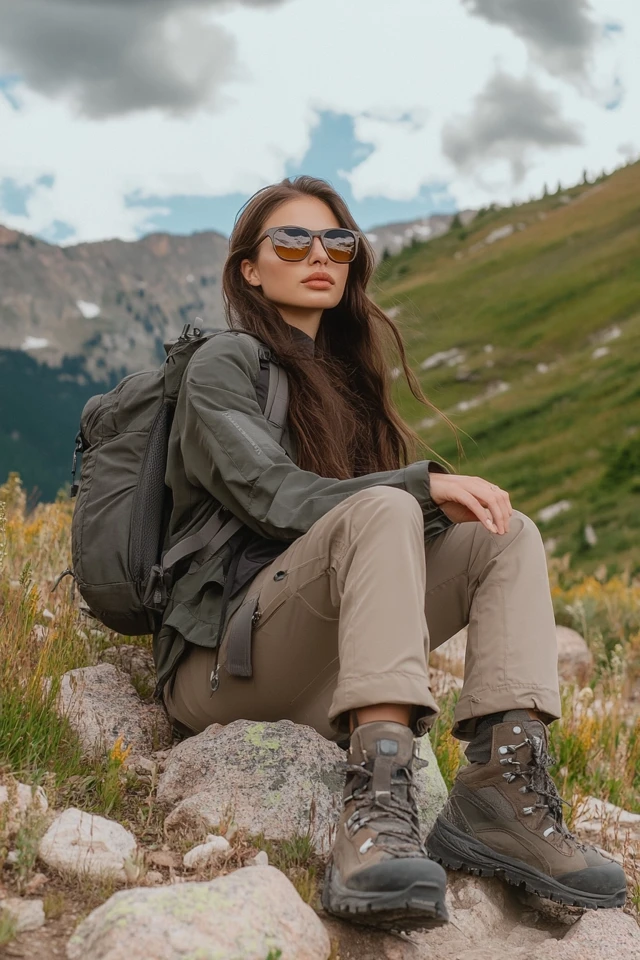
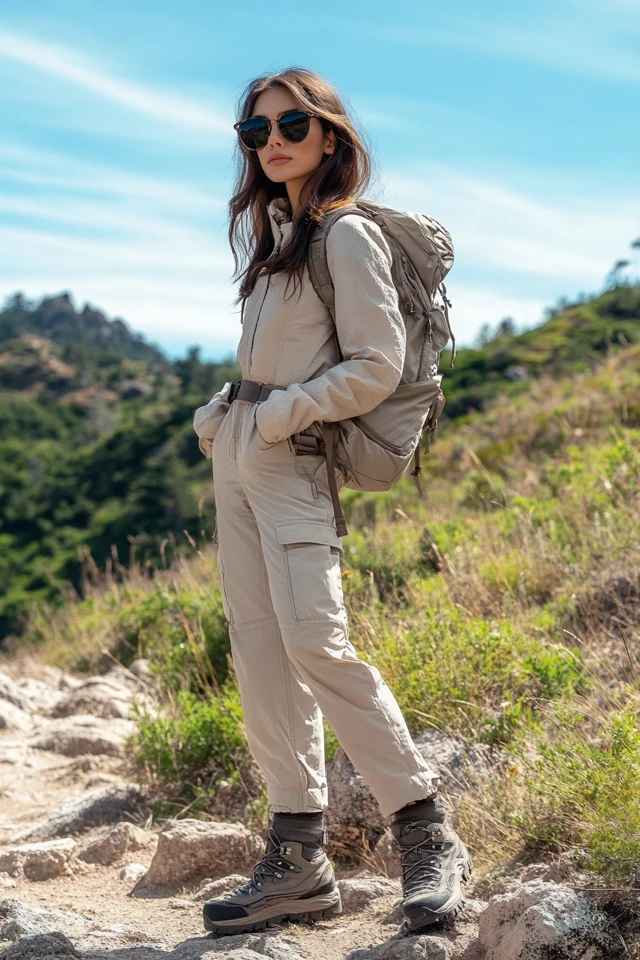
Color Psychology & Emotional Impact
While function is the top priority when choosing hiking boots, color and style can also play a role in how you feel wearing them. Neutral tones like brown, black, and gray are classic choices that exude reliability and durability. These shades blend seamlessly with outdoor gear and look timeless, whether you’re hiking through forests or strolling around town.
On the other hand, modern hiking boots often incorporate pops of color—think bright orange, teal, or red accents. These bold details add energy and personality, making your boots feel like an extension of your style. A pair of boots with turquoise laces, for example, might inspire a little extra spring in your step as you tackle a challenging trail.
If you’re new to hiking, starting with a neutral-colored boot can be a safe bet. But if you’re looking for something more fun or expressive, don’t shy away from options with colorful midsoles, contrasting panels, or adventurous patterns. The goal is to find a pair that feels like “you” while still meeting your functional needs.
Personal Style & Fit Considerations
The right hiking boots should feel like a natural extension of your feet. Fit is crucial—not just for comfort, but also for preventing injuries like blisters or rolled ankles. Here’s how to find the perfect pair for your adventures:
Fit Tips
- Try Before You Buy: Always try hiking boots on with the socks you plan to wear while hiking. A thicker sock can make a huge difference in fit and comfort.
- Room for Toes: Your boots should have enough room in the toe box to prevent your toes from hitting the front on downhill sections.
- Snug at the Heel: A secure fit around the heel prevents slipping, which can cause blisters.
- Break Them In: New boots often need to be broken in before a big hike. Wear them around the house or on shorter walks to ensure they mold to your feet.
Styles for Different Adventures
- Day Hikes: For shorter trails, lightweight hiking boots or trail shoes are a great option. They’re less bulky but still provide ample support.
- Backpacking Trips: For multi-day adventures, opt for mid or high-cut boots with extra ankle support and durability.
- Winter Hikes: Insulated, waterproof boots with aggressive traction are a must for snowy or icy conditions.
I once invested in a pair of sturdy leather hiking boots for a trip to the mountains. They felt slightly stiff at first, but after a few weeks of breaking them in, they became my most trusted outdoor companion. Now, I can’t imagine tackling a trail without them.
Current Trends & Timeless Classics
Hiking boots have come a long way from their purely utilitarian roots. Today’s designs strike a balance between function and fashion, making them as suitable for weekend hikes as they are for casual urban outings.
Current Trends in Hiking Boots
- Sleek Minimalism: Many brands now offer hiking boots with streamlined designs that prioritize clean lines and neutral colors, perfect for those who prefer a low-key aesthetic.
- Athleisure Influences: Hybrid hiking boots that combine the rugged features of traditional boots with the lightweight comfort of sneakers are growing in popularity.
- Bold Color Accents: Brightly colored soles, laces, or panels bring a playful edge to modern hiking boots, making them more fashion-forward.
Timeless Classics
Classic leather hiking boots never go out of style. Known for their durability and rugged good looks, they’re perfect for serious hikers and outdoor enthusiasts. Plus, leather only gets better with time, developing a unique patina that tells the story of your adventures.
Personally, I love the versatility of my classic brown leather boots. They look just as good with hiking pants on the trail as they do with skinny jeans and a flannel shirt for casual errands.
Practical Tips & Recommendations
Here are some practical tips to help you choose, style, and care for your hiking boots:
- Invest in Quality Socks: The right socks can make or break your hiking experience. Look for moisture-wicking, cushioned options to keep your feet comfortable and blister-free.
- Don’t Forget Gaiters: If you’re hiking in muddy or snowy conditions, gaiters can protect your boots and keep debris out.
- Pair with Versatile Outfits: For post-hike activities, style your boots with leggings, a cozy sweater, and a quilted vest for a functional yet fashionable look.
- Clean and Condition: After every hike, clean off dirt and debris to extend the life of your boots. Leather boots benefit from occasional conditioning to keep them supple and waterproof.
One of my favorite outfits for a casual hike is my waterproof hiking boots, black leggings, and a long-sleeve thermal tee topped with a puffer vest. It’s practical, comfortable, and stylish enough to grab coffee afterward.
FAQs
1. How do I know if my hiking boots are waterproof?
Most waterproof hiking boots are labeled as such and feature a membrane like Gore-Tex. Check the product description or tags when purchasing.
2. How do I prevent blisters while hiking?
Wear moisture-wicking socks, ensure a proper fit, and break in your boots before embarking on longer hikes. Applying blister prevention tape to sensitive areas can also help.
3. Are hiking boots necessary for easy trails?
While not strictly necessary, hiking boots provide better traction and support than sneakers, making even easy trails more comfortable and safer.
4. How long do hiking boots last?
With proper care, high-quality hiking boots can last several years, depending on how frequently you use them. Signs that it’s time for a replacement include worn-out soles, compromised waterproofing, or significant wear to the upper.
5. Can hiking boots double as winter boots?
Yes! Insulated, waterproof hiking boots with good traction can handle snowy conditions, but make sure they’re rated for cold weather.
Conclusion
Durable hiking boots are the cornerstone of any successful adventure. They provide the support, traction, and comfort you need to navigate even the toughest trails with confidence. Whether you prefer classic leather designs or modern, lightweight styles, there’s a perfect pair of hiking boots out there to suit your needs.
I hope this guide has inspired you to invest in a pair of boots that will carry you through many adventures, from leisurely nature walks to challenging mountain treks. With the right footwear, the possibilities are endless—so lace up and hit the trail!
What’s your favorite hiking boot brand or style? Share your experiences in the comments below—I’d love to hear how you gear up for your adventure days!

